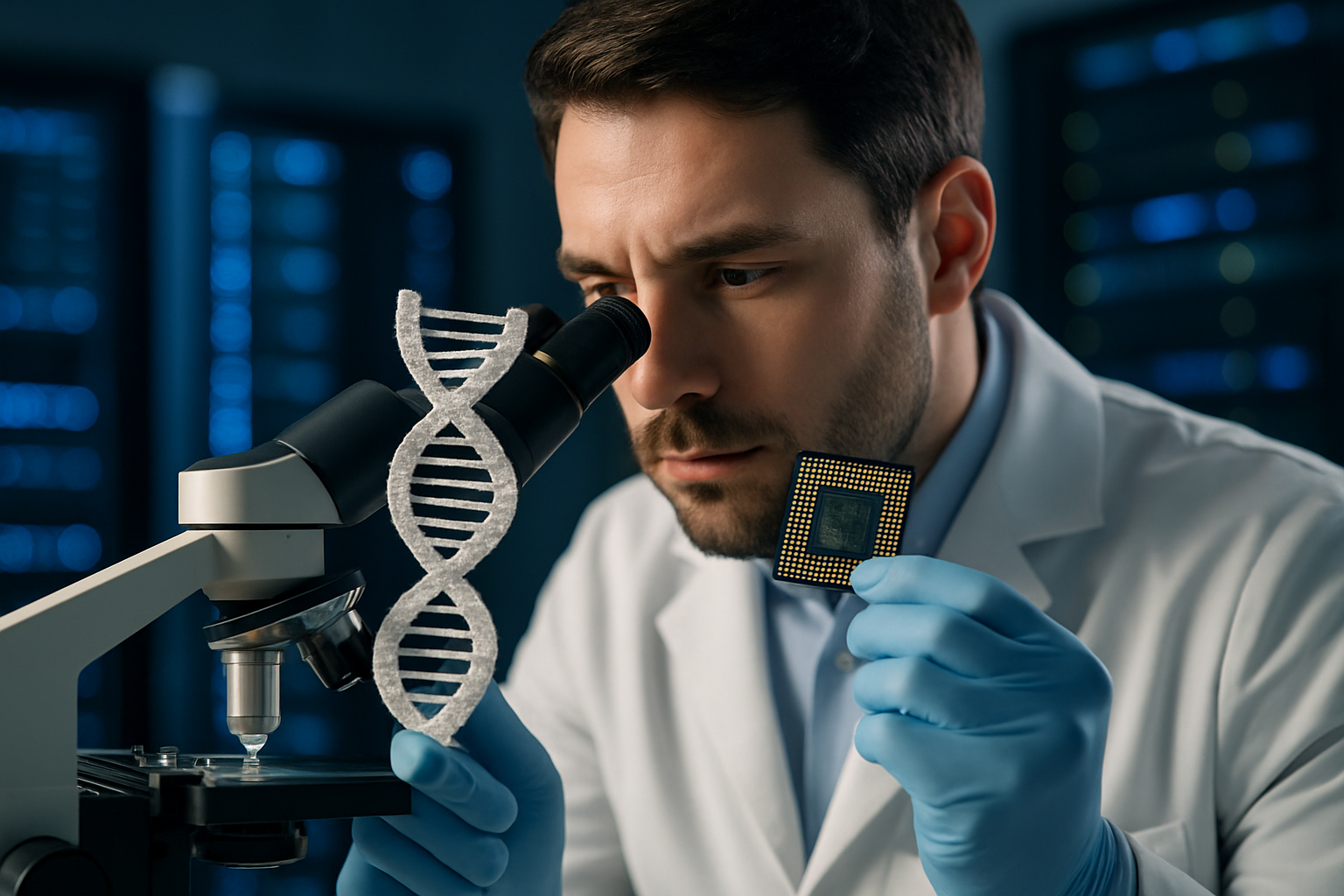Biohacking Communities: The Frontier of DIY Human Enhancement
The convergence of technology and biology has given rise to a fascinating subculture of self-experimenters and citizen scientists. Biohacking communities are pushing the boundaries of human enhancement through DIY methods, sparking debates about ethics, safety, and the future of human evolution. From implantable devices to genetic modifications, these modern-day alchemists are redefining what it means to be human. Read below to explore this cutting-edge movement and its implications for society.

The Origins of Biohacking
The roots of biohacking can be traced back to the 1980s, when the concept of transhumanism began to gain popularity. Transhumanists advocated for the use of technology to enhance human physical and cognitive abilities, laying the philosophical groundwork for modern biohacking. As personal computing and the internet became more widespread in the 1990s and 2000s, access to scientific information and tools democratized, enabling individuals to experiment with biology outside of traditional institutional settings.
The DIY biology movement emerged in the mid-2000s, with community labs and hackerspaces dedicated to biotechnology popping up in major cities. These spaces provided equipment, resources, and networking opportunities for amateur scientists and curious individuals to explore genetic engineering, synthetic biology, and other cutting-edge fields. As the movement grew, online communities formed, allowing biohackers to share knowledge, techniques, and results on a global scale.
Types of Biohacking
Biohacking encompasses a wide range of practices, from relatively simple lifestyle modifications to more extreme forms of body modification. Some common types of biohacking include:
Nutrigenomics: This involves optimizing nutrition based on an individual’s genetic profile. Biohackers use DNA testing to identify genetic variants that may influence how their bodies process certain nutrients, and then tailor their diets accordingly.
Nootropics: Also known as smart drugs or cognitive enhancers, nootropics are substances believed to improve mental function. Biohackers experiment with various compounds, both natural and synthetic, to boost memory, focus, and creativity.
Wearable technology: From fitness trackers to brain-computer interfaces, biohackers embrace wearable devices that monitor and enhance bodily functions. Some even develop their own custom devices to track specific biomarkers or augment their senses.
Implantable technology: More adventurous biohackers opt for surgically implanted devices, such as RFID chips for keyless entry or magnets for sensing electromagnetic fields. These cyborg-like modifications blur the line between human and machine.
Gene editing: With the advent of CRISPR technology, some biohackers have begun experimenting with genetic modifications. While most focus on simple organisms like bacteria, a few have attempted to alter their own DNA, raising ethical and safety concerns.
The Biohacking Community Landscape
Biohacking communities are diverse and decentralized, reflecting the movement’s DIY ethos. Online forums and social media platforms serve as hubs for information exchange, while local meetups and conferences provide opportunities for face-to-face collaboration. Some notable elements of the biohacking community landscape include:
Grinder subculture: Grinders are biohackers who focus on cybernetic implants and other forms of technological body modification. They often push the boundaries of what’s considered socially acceptable in their pursuit of human enhancement.
Biohacking spaces: Community laboratories, such as Genspace in New York City and BioCurious in Silicon Valley, offer equipment, classes, and workspace for aspiring biohackers. These spaces foster collaboration and innovation while promoting responsible practices.
Open-source projects: Many biohackers embrace open-source principles, freely sharing their designs, protocols, and findings. This collaborative approach accelerates innovation but also raises concerns about the potential misuse of biotechnology.
Corporate involvement: As biohacking gains mainstream attention, some companies are entering the space with consumer-oriented products and services. This commercialization has led to debates within the community about authenticity and the movement’s original DIY spirit.
Ethical and Legal Considerations
The rise of biohacking communities has sparked intense debates about the ethical and legal implications of DIY human enhancement. Some key issues include:
Safety concerns: Many biohacking practices lack rigorous scientific testing and may pose risks to individuals and public health. Regulatory agencies struggle to keep pace with rapidly evolving technologies and techniques.
Accessibility and inequality: While biohacking advocates argue that DIY approaches democratize science and medicine, critics worry that human enhancement technologies could exacerbate existing social inequalities.
Bioethics: The ability to modify human biology raises profound questions about the nature of humanity and the limits of personal autonomy. Philosophers and ethicists grapple with the long-term implications of human enhancement.
Biosecurity: The democratization of biotechnology also raises concerns about potential misuse, such as the creation of biological weapons or the accidental release of genetically modified organisms.
Regulation: Governments around the world are struggling to develop appropriate regulatory frameworks for biohacking activities. Striking a balance between innovation and public safety remains a significant challenge.
The Future of Biohacking Communities
As technology continues to advance, biohacking communities are likely to play an increasingly significant role in shaping the future of human enhancement. Some potential developments include:
Mainstream adoption: As biohacking techniques become more refined and accessible, some practices may gain wider acceptance and integration into conventional healthcare and wellness paradigms.
Scientific breakthroughs: The decentralized, experimental nature of biohacking could lead to unexpected discoveries and innovations in fields such as medicine, biotechnology, and human-computer interaction.
Social and cultural shifts: The normalization of human enhancement technologies may fundamentally alter societal notions of health, ability, and human potential.
Regulatory evolution: Governments and international bodies will need to develop more nuanced and adaptive regulatory frameworks to address the unique challenges posed by biohacking.
Ethical debates: As the capabilities of biohacking expand, society will grapple with increasingly complex ethical questions about the limits and implications of human enhancement.
The emergence of biohacking communities represents a fascinating convergence of technology, biology, and grassroots innovation. As these modern-day alchemists continue to push the boundaries of human enhancement, they challenge us to reconsider our relationship with our bodies, our definition of humanity, and the future trajectory of our species. Whether viewed as visionary pioneers or reckless experimenters, biohackers are undoubtedly shaping the frontier of human evolution in the 21st century.





